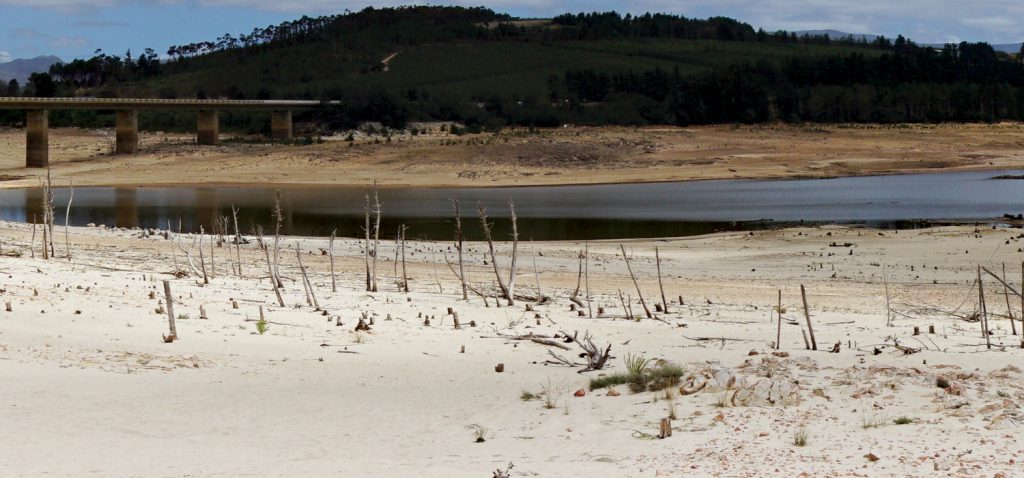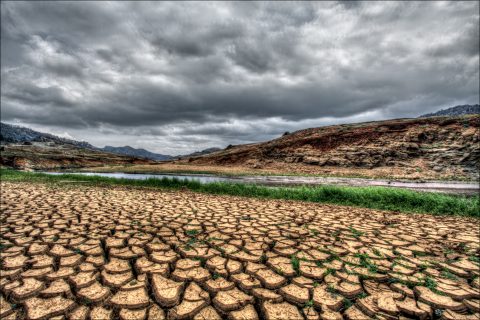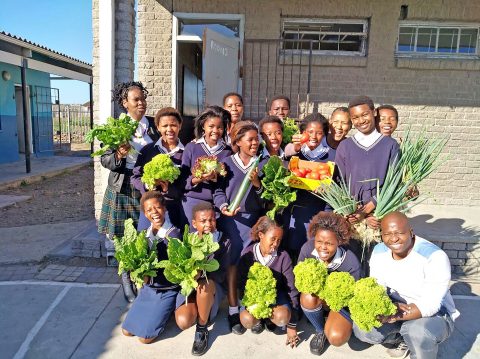SA Mining
Water Crisis
More than two decades ago, science advocate Ismail Serageldin forewarned that “the wars of the next century will be fought over water, unless we change our approach to managing this precious and vital resource”. This sentiment is perilously close for comfort for South Africa, whose water crisis is manifesting with dire consequences.
Given that the country has done little in the recent past to rectify its water challenges, it will soon pay the price, financially, socially and economically, says Mariette Liefferink, CEO of the Federation for a Sustainable Environment (FSE).
Cape Town has already had a taste of the negative effects associated with the prolonged drought including a social, economical and financial impact which includes a dramatic drop in tourism and an economic knock of over R5-billion to its agricultural sector.
Liefferink explains that based on current demand projections, the water deficit the country faces could be between 2.7 billion and 3.8 billion cubic metres – a gap of around 17% by 2030, and failure to speedily balance demand with supply requirements will further exacerbate the situation.
“The Limpopo River is already over-allocated by 120% and by 2025 it will be over-allocated by 241%. Apart from increasing water requirements for residential use, increase in water consumption is also being driven by new mining projects in the Limpopo region which require water to meet the country’s power needs,” she says. “On the back of robust demand for coal, new and expansion projects are on the rise, including expansions to Exxaro’s Grootegeluk mine which feeds Medupi Power Station.”
Insufficient water to meet the needs of the country could very well result in economic and job stagnation, which will translate to social decay (increased protests by residents). South Africa’s unemployment rate is pegged at a staggering 26.7%.
“South Africa’s water scarcity could get rapidly worse as supply contracts and demand escalates due to growth, urbanisation, unsustainable use, degradation of wetlands, water losses and a decrease in rainfall due to climate change.”
Added to this are several mega trends which are expected to unfold during the next few decades that could lead to new or accelerated water quality challenges. These include climate change, hydraulic fracturing, rural-urban migration and growth of inadequately serviced densely populated settlements and the adoption of new manufacturing and industrial processes.
The findings by the Council for Scientific and Industrial Research that all four major river basins – Incomati, Limpopo, Maputo and Orange-Senqu – will transition into absolute water scarcity by 2025 adds weight to Liefferink’s call for South Africa to speedily address its water challenges.
The water sector must therefore take bold steps to adopt a “new normal” to head off the projected water gap, advises Liefferink.
Unpacking the water challenges
The challenges that have accrued to date include, among others, government’s inability to complete water infrastructure projects timeously.
For example, the National Development Plan and the Reconciliation Strategies for the Orange and Vaal Rivers envisioned the completion of the Lesotho Highland Water Project Phase 2 by 2020 to address the growing deficit within the Vaal River System. The project has, however, been delayed to 2025. In addition, the 2014 Reconciliation Strategy for the Integrated Vaal River System that envisioned the desalination of acid mine drainage (AMD) by 2014/15 to address the growing deficit within the Vaal River System has been delayed to 2022.
Such delays impact on water supply reliability which, explains Liefferink, is currently at 65% of reliability for the country.
“In the 27 priority district municipalities, water reliability is only at 42%, with the worst 10 water services authorities at below 30%, including Gauteng, Western Cape and Pietermaritzburg.”
In addition, the condition of existing raw water quality continues to deteriorate with ineffectual water management systems adding to a faster decline in water quality.
Decline in water resource quality is often a result of failing sewer collector mains and pump-sets, and dysfunctional wastewater treatment works. Most of these failures are due to wastewater treatment facilities being operated beyond design capacity or operated by process controllers who lack the necessary expertise, she says.
“Deteriorating water quality is a major factor constraining economic and social developments. As it stands, 56% of the over 1 150 wastewater treatment works are in a poor or critical state, and must be rehabilitated urgently and properly maintained thereafter. Moreover, 44% of 962 domestic local government water treatment works are in a poor condition and these too require urgent rehabilitation,” says Liefferink.
“This decline in water quality will be one of the major threats to the country’s ability to provide sufficient water of suitable quality that can support development needs, while at the same time ensuring the environmental sustainability of the water use. The most significant issue in this regard is the ability to control sources of pollution and to manage pollution when it is necessary. Key drivers are the growing population, the need to develop the social economy to support ongoing development objectives, increasing urbanisation, the introduction of new contaminants and climate change,” says Liefferink.
Furthermore, a lack of available data and information poses high risks to decision-making and planning.
The Department of Water and Sanitation (DWS) has delayed the release of two important reports: the Blue Drop Report, which conveys information on water quality; and the Green Drop Report, which informs the public on the wastewater treatment – these were last released in 2013. Without these annual reports, industry is unable to access the latest information related to the most recent water and sewage quality, and thereby make appropriate amendments and recommendations.
Added to this is the dire shortage of experienced personnel (around 800 vacancies at the DWS) and a massive skills gap in all water sector institutions, negatively affecting the efficiency of the department.
Importantly, the financial resources currently available for managing water quality are insufficient for the task, and don’t recognise the level of investment required to counteract the economic harm done by declining water quality.
“There is, among others, a continued culture of non-payment; lack of political will to hold major polluters accountable; and a lack of sustainable financial models for local government, leading to inadequate funds to maintain wastewater treatment works, such as ring-fencing of funds to appropriate solutions,” says Liefferink.
Mining’s impact on water
The mining sector, which contributes around 7.5% to gross domestic product (GDP), is a key contributor to water degradation through AMD, which contains the most concentrated salt stream.
Acid mine water often contains a broad spectrum of metals in toxic concentrations and radioactive particles, or is acidic, which can be extremely harmful to the health of humans, animals and plants.
As part of the action plan, Liefferink calls for the reuse of treated mine water.
Government measures for the short-term treatment of AMD by means of neutralisation or a pH adjustment include the development of three treatment plants – the Western Basin in Krugersdorp, the Central Basin in Germiston and the Eastern Basin Acid Mine Drainage treatment plant in Springs on the East Rand.
Apart from the need for government to ensure that comprehensive and bankable mine water management plans are in place before water licences to mining companies are issued, it also needs to realise that the development of new mines in water-scarce areas requires forward planning, she says.
Protecting aquatic ecosystems
Liefferink calls on industry to “protect the ecological infrastructure of our natural aquatic ecosystems which is crucial for economic development, water and food security and the assurance of healthy and functional water resources that will support future sustainable development”.
“At this point in time, 57% of all river ecosystem types are threatened, with 65% of main rivers at risk including 46% which are rated as being on the critically endangered level. In fact, 65% of wetland ecosystem types are threatened, making wetlands the most threatened of all ecosystems. Seventy-one percent of them are not being protected at all. Wetlands are exceptionally high-value ecosystems that make up only a small fraction of the surface area of the country,” she explains.
The way forward
Master plan or water under the bridge?
Is the National Water and Sanitation Master Plan too little too late?
And can the water sector, which has been reluctant to act with speed in dealing with the situation, be trusted to take immediate action?
According to Liefferink, a draft of the master plan outlined in 2017 is up for public comment.
The National Water and Sanitation Master Plan is expected to take in hand the poor water situation in the country and put measures in place to ensure a resilient water supply that is fit for use, and offers universal water and sanitation provision, equitable sharing and allocation of resources, effective infrastructure management operation and maintenance and a reduction in water-demand projections.
According to Liefferink, the master plan recognises the existing shortcomings and has steps in place to address the challenges.
“There is recognition that the delegation of powers between different government departments at national, provincial and municipal levels is unclear, that institutional roles and responsibilities are fragmented and that there is much overlapping of responsibilities. As such, there is a definite need to rationalise and align national legislation, even our own NWA, to remove ambiguity.”
To address the growing water deficit, Liefferink advocates for the speedy development of the Polihali Dam, “which must be built by 2020” as it will feed water from the Lesotho Highlands into the Vaal and Orange rivers. Already the Orange River forgoes some of its water content to the Vaal River, which is vital for meeting the needs of the economy. “The Vaal River supports the needs of 60% of the economy, and 45% of the country’s population’s needs.”
She also calls for the adoption of new monitoring technologies, and improving data management and distribution as well as ensuring that competent staff are put in charge of the wastewater treatment works.
“Water monitoring must be done diligently and where a problem is encountered, it must be addressed immediately and suitably.”
Ageing infrastructure is a massive problem which, she says, leads to water losses of around 35%, and she thus advocates for infrastructure maintenance to become a top priority.







 Sign-up and receive the Business Media MAGS newsletter OR SA Mining newsletter straight to your inbox.
Sign-up and receive the Business Media MAGS newsletter OR SA Mining newsletter straight to your inbox.